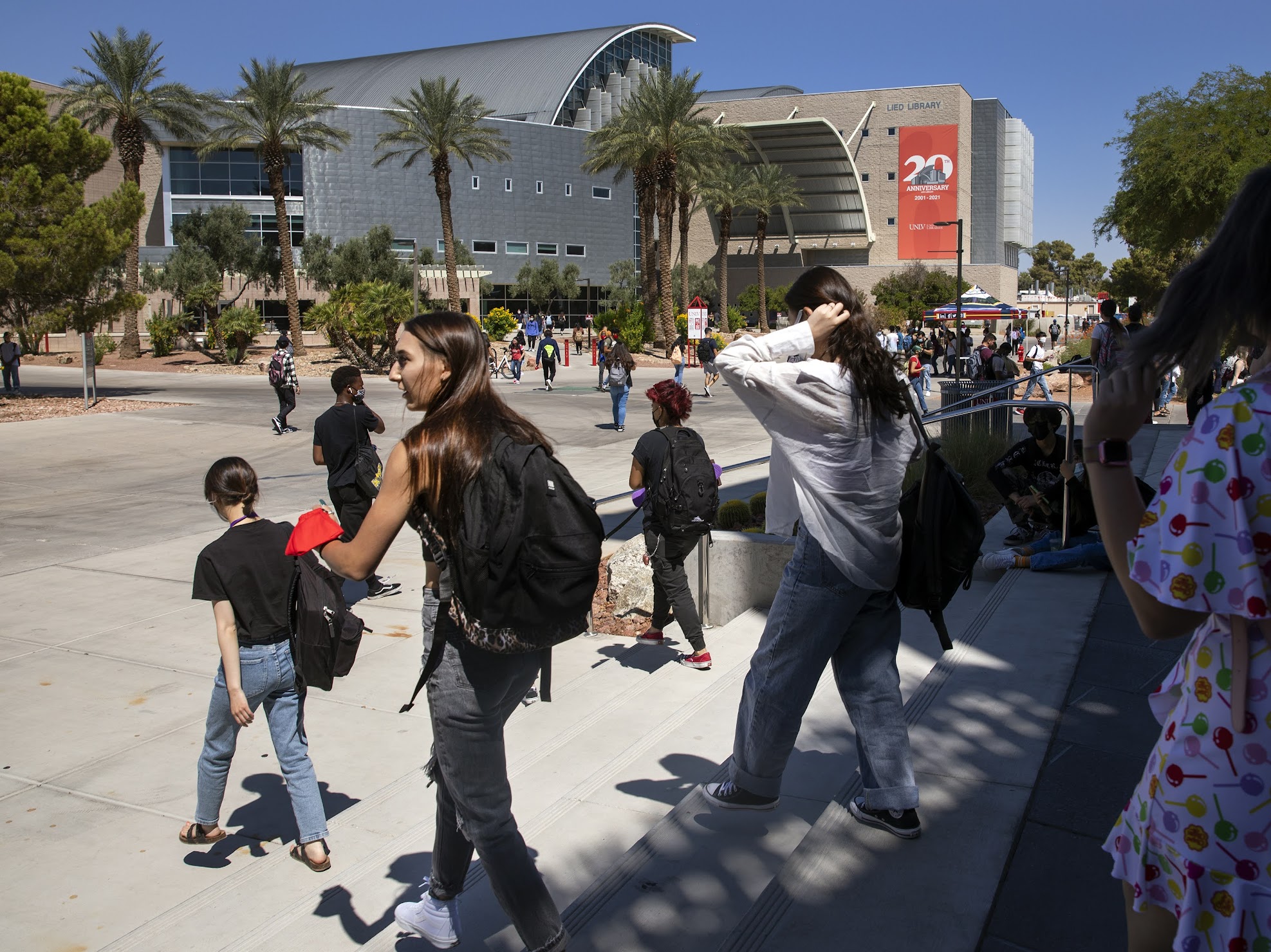How a historic state worker pay boost could force higher ed cuts

As vacancy rates have gutted state agencies, lawmakers across both parties have rushed to craft sweeping changes to the state’s government employee compensation packages, promising historic increases to both salaries and the expansion of benefits packages.
That includes thousands of professional staffers at the Nevada System of Higher Education (NSHE), who could stand to see a combined 16.7 percent increase in pay over the next biennium, under the current language of proposals.
But amid a now-highly partisan split over just what those packages ought to look like, the state’s higher education institutions have raised concerns that the size of the increase — coupled with the way the state funds those increases — may force colleges and universities to make budget cuts or increase student fees, even under 2023's budgetary windfall.
At issue, according to a budget presentation given to regents, are byzantine budgeting structures that functionally require NSHE to pony up roughly one-third of any state-funded compensation increases, in an approximate match to the amount of funding the system receives through so-called “self-supporting” funds, such as student fees.
“It is a challenge for us,” Chancellor Dale Erquiaga told the Board of Regents during a special meeting on April 21. “It's a good challenge, because folks will be paid well. But the downstream effect is potentially not at all what the governor or the Legislature intend.”
Historically, the state government funds just 80 percent of cost of living adjustments for all state agencies, often because a mix of existing vacancies and agency reserves made full funding unnecessary. But beginning in 2019, the state began funding just 64 percent of those cost of living adjustments at NSHE, specifically, applying a formula of “80 percent of 80 percent” during that year’s budgeting process.
Those changes were later solidified in 2021, when lawmakers inserted new language into the state worker pay bill tying NSHE-specific cost of living increases to “the proportion of appropriations from the State General Fund to total revenue within each state-supported budget of the Nevada System of Higher Education” — an amount around two-thirds.
That change came in part because of the complexity of funding for higher education employees, which includes not only strictly state-funded workers, but also grant-funded workers or positions supplemented by non-state money. In those past budgeting cycles, the change was also relatively tame in terms of raw dollars and cents. Cost-of-living adjustments ran just 1 percent annually.
But in recent weeks, administrators have privately raised concerns that the newest proposals — a 2 percent increase in June, another 10 percent next fiscal year and 4 percent again the year after — could force institutions to make budget cuts, or even increase student fees.
At the April 21 regents’ meeting, NSHE Chief Financial Officer Andrew Clinger made those concerns public, telling the board that the sheer size of the coming increases “becomes a significant amount of money that could have a detrimental impact on our state operating budgets.”
“If now, suddenly, there is an additional cost that has an impact on our budgets, we have three choices, the way I see it,” Clinger said. “We either have to cut other costs to accommodate that 35 percent that we have to pay for [cost of living], we have to hold positions vacant, which is also another way to cut costs, or we would have to raise student fees to cover that balance.”
He told the board that he, Erquiaga and a system lobbyist had met with lawmakers in a bid to restore the 80 percent cost-of-living funding level. He also called it an “uphill battle,” in large part because “the way they view it, we have the one-third of student fees.”
“The challenge with that, though, is when we present our budgets to the governor with that roughly one-third, two-thirds, is that one-third of student fees has already been programmed, it's been allocated to positions and operating costs,” Clinger told the board.
Clinger did not respond to multiple requests for comment for this story.
The large cost-of-living increases may also affect different campuses to differing degrees. In early April, for instance, UNR President Brian Sandoval told The Nevada Independent that the two-thirds threshold was “something that we have budgeted for and will be prepared to meet.”
“But I know for some of the campuses that’s a concern, because they have to find that money,” Sandoval said.
It was not immediately clear, if regents were to entertain an increase in student fees at all, how that increase would be accomplished. Nevada tuition rates are currently bound by a “predictable pricing program,” a 2019 policy that pegs tuition increases to a national higher education inflation index, and only implements increases on a four-year lag.
Still, the board appeared reticent to take up the question of student fees at all. That includes Board Chair Byron Brooks, who pressed Erquiaga on the scope of lobbying efforts and said that “how [cost of living adjustments are] being funded and how this is being taken care of is a concern.”
“The additional concern is presidents coming back at a future meeting and asking for us to raise student fees,” Brooks said. “And I would like to not have that conversation.”
